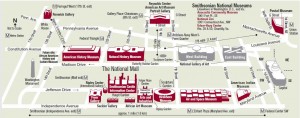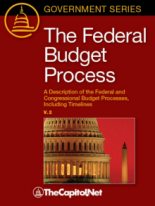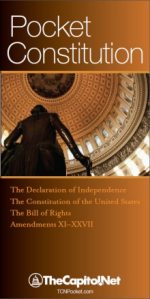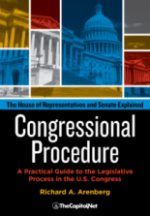From the Congressional Glossary – Including Legislative and Budget Terms
Capitol / Capitol Hill Map / National Mall

“The Capitol” is the United States Capitol Building, the building in which Congress meets. The Capitol is located on Capitol Hill in Washington, DC. (“The Capitol” is not “the Capital” and Capitol Hill is not Capital Hill. Washington DC is the nation’s capital, America’s capital city.)
For a Capitol Hill Map that includes links to the House Office Buildings (HOB), Senate Office Buildings (SOB), and hotels and restaurants on Capitol Hill, see TCNMap.com. For information about tours of federal buildings, including the Capitol, arranged by your Member of Congress, see our What’s the Deal With…? page. Also see How to Contact Congress and our Capitol Learning Audio Course (an online download), What Your Member of Congress Can Do for You: Gallery Passes, Flags, Presidential Greetings, and Help with Federal Agencies.
Visits to the inside of the historic Capitol building begin at the Capitol Visitor Center, located underground on the East Front Plaza, to visit areas inside the Capitol beyond the Capitol Visitor Center, you must make a reservation in advance. The historic Capitol Grounds are open 24 hours-a-day everyday of the year, with the exception of special events.
Visiting the United States Capitol
In its physical presence, the Capitol symbolizes our national political life. In this magnificent building, one senses the history of the nation. Paintings depict historical events. Visitors listen to whispers at the location of John Quincy Adams’ desk in the Old House Chamber, now National Statuary Hall. Busts of the vice presidents, who served as presidents of the Senate, line the Senate chamber and corridors.
Presidents are inaugurated at the Capitol, and they deliver their State of the Union addresses in the House chamber. When one walks the Capitol corridors, one feels the presence of presidents, of renowned and nearly forgotten members of Congress, and of millions of visitors. It is in the Capitol Rotunda that a few Americans have lain in state. This is the place where national and foreign dignitaries have come to witness history or to be a part of it, from the Marquis de Lafayette to Julia Ward Howe to Frederick Douglass to Winston Churchill to the Apollo astronauts to Nelson Mandela. Most importantly, the Capitol houses Congress.
From the Preface in the Congressional Deskbook.
The West Front of the Capitol faces The National Mall, with its terraces providing sweeping views of Pennsylvania Avenue, the Smithsonian buildings, and other museums, monuments, and federal office buildings.

Visiting the United States Capitol
The National Mall is located between the Capitol on the east, the Lincoln Memorial on the west, Constitution Avenue NW (Route 50) on the north, and Independence Avenue SW on the south.

View Larger Map
The names of the four avenues in DC that are centered on the Capitol are taken from the Mid-Atlantic states: Pennsylvania, Maryland, Delaware, and New Jersey. Between Pennsylvania Avenue and Maryland Avenue is the National Mall, and between the Pennsylvania and Maryland border is the Mason-Dixon Line separating the old South from the Northern states.
Appendix 3, in Lobbying and Advocacy.
Congress is not only “inside the Beltway,” the Capitol is at the center of the Beltway. (Although some claim that the Zero Milestone is at the center of DC.)
The History of the United States Capitol
Also see
- “The seven stages of the office seeker”
- Capitol Hill: Map, Parking, Buildings, Hotels, Restaurants
- Congress (CongressionalGlossary.com)
- K Street / Gucci Gulch (CongressionalGlossary.com)
- Pennsylvania Avenue (CongressionalGlossary.com)
- Crony Capitalism / Rent-Seeking / Corporate Welfare / Revolving Door (CongressionalGlossary.com)
- § 4.121 Architect of the Capitol, § 11.30 Guide to Public Buildings on Capitol Hill, Chapter Eleven, Legislative Research: Viewing and Visiting Congress, in Congressional Deskbook
- Appendix 3, in Lobbying and Advocacy.
More
- Visiting Washington, DC – TheCapitol.Net
- How to Get Into, Around And Out Of Washington, DC – TheCapitol.Net
- Capitol Hill: Map, Parking, Buildings, Hotels, Restaurants – TheCapitol.Net
- Visiting the U.S. Capitol Building and Capitol Hill – Architect of the Capitol
- Capitol Visitor Center
- How to Contact Congress
- “The Capitol Visitor Center: An Overview,” CRS Report RL31121 (69-page PDF
 )
) - “Architect of the Capitol: Appointment Process and Current Legislation,” CRS Report R41074 (23-page PDF
 )
)
Courses
- Congressional Operations Briefing – Capitol Hill Workshop
- Drafting Federal Legislation and Amendments
- Writing for Government and Business: Critical Thinking and Writing
- Custom Training
- Congressional Operations Poster, with Federal Budget Process Flowchart
- Federal Budgeting, a Five-Course series on CD
- Congress, the Legislative Process, and the Fundamentals of Lawmaking Series, a Nine-Course series on CD
Publications

The Federal Budget Process 2E

Pocket Constitution

Citizen’s Handbook to Influencing Elected Officials: A Guide for Citizen Lobbyists and Grassroots Advocates

Congressional Procedure
CongressionalGlossary.com, from TheCapitol.Net
For more than 40 years, TheCapitol.Net and its predecessor, Congressional Quarterly Executive Conferences, have been teaching professionals from government, military, business, and NGOs about the dynamics and operations of the legislative and executive branches and how to work with them.
Our custom on-site and online training, publications, and audio courses include congressional operations, legislative and budget process, communication and advocacy, media and public relations, testifying before Congress, research skills, legislative drafting, critical thinking and writing, and more.
TheCapitol.Net is on the GSA Schedule, MAS, for custom on-site and online training. GSA Contract GS02F0192X
TheCapitol.Net is now owned by the Sunwater Institute.
Teaching how Washington and Congress work ™

